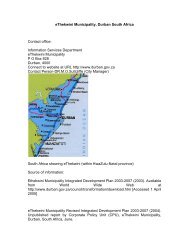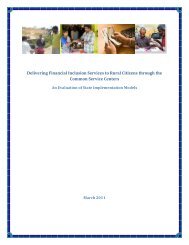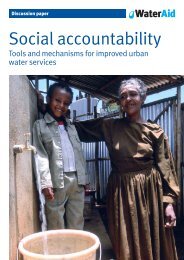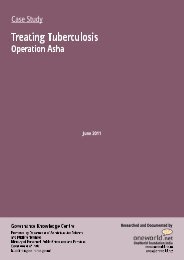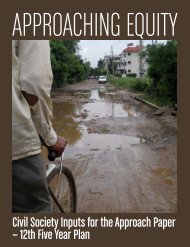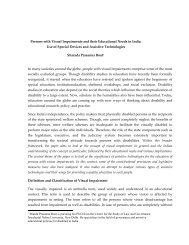See full case study - Indiagovernance.gov.in
See full case study - Indiagovernance.gov.in
See full case study - Indiagovernance.gov.in
- No tags were found...
Create successful ePaper yourself
Turn your PDF publications into a flip-book with our unique Google optimized e-Paper software.
Governance Knowledge CentrePromoted by Department of Adm<strong>in</strong>istrative Reforms and Public GrievancesM<strong>in</strong>istry of Personnel, Public Grievances and PensionsGovernment of IndiaCase StudyUrban DevelopmentIn-Situ Slum Upgradation under JNNURMTRANSPARENCY AND ACCOUNTABILITYJanuary 2012dwellers for construct<strong>in</strong>g houses on their own, with no access to affordable loans, andtechnological and architectural expertise for construction, also fall short of provid<strong>in</strong>gsusta<strong>in</strong>able solution to the homeless.On recognis<strong>in</strong>g the importance of address<strong>in</strong>g there press<strong>in</strong>g concerns to build an <strong>in</strong>clusiveurban space and to fill <strong>in</strong> the gaps <strong>in</strong> the exist<strong>in</strong>g slum development policies, a uniquecommunity driven <strong>in</strong>-situ project was designed by the PMC under BSUP scheme of JNNURM.This project, designed to upgrade 7 high density slum areas <strong>in</strong> Yedwara region of Pune, isemerg<strong>in</strong>g as a dist<strong>in</strong>guished effort that is receiv<strong>in</strong>g national and <strong>in</strong>ternational accolades.Innovativeness of this project lies <strong>in</strong> its hous<strong>in</strong>g designs that allow the locals to have houseswith all the basic amenities <strong>in</strong> their own settlements without bear<strong>in</strong>g the brunt of be<strong>in</strong>guprooted to a <strong>gov</strong>ernment imposed outskirt.OBJECTIVEThe objective of the project was to improve liv<strong>in</strong>g conditions <strong>in</strong> the slum areas of Pune. It aimedto build houses with all the basic amenities like sanitation and better ventilation. As lack oftoilets was a major issue <strong>in</strong> these high density slums pockets, special emphasis was given onbuild<strong>in</strong>g <strong>in</strong>-door sanitation facility. The project targeted to develop a total of 4,000 units <strong>in</strong> Puneout of which 1,099 kuccha houses were selected under Yerwada region.PROGRAMME/PROJECT ROJECT DESIGNKEY STAKEHOLDERS1. Pune Municipal Corporation (PMC) undertook the <strong>in</strong>-situ slum upgradation projectunder the central <strong>gov</strong>ernment’s scheme of Basic Services for the Urban Poor (BSUP)under the Jawaharlal Nehru National Urban Renewal Mission (JNNURM). PMCselected 7 slums <strong>in</strong> the Yerwada region of Pune for upgradation. PMC came up with atender for the NGOs to apply for tak<strong>in</strong>g up the project. The NGO had to have strongcommunity presence and experience of work<strong>in</strong>g closely with the local electedrepresentatives.2. The Society for the Promotion of Area Resource Centres (SPARC) was appo<strong>in</strong>ted bythe PMC to implement the project. SPARC is a national-level level NGO that works on theissues of hous<strong>in</strong>g and sanitation for the urban poor. SPARC <strong>in</strong>itiates efforts to organiseand mobilise communities of the slum dwellers to help them ga<strong>in</strong> access to resourcesrequired for upgradation and formalisation of the various forms of <strong>in</strong>formal1Researched and documented byOneWorld Foundation India




